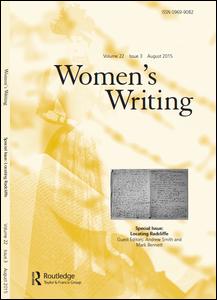
Women's Writing
Volume 20, Issue 2, May 2013
Pages 235-246
- DOI: 10.1080/09699082.2013.773777
- Print ISSN: 0969-9082
- Online ISSN: 1747-5848
EMBODYING AGENCY: OUIDA'S SENSATIONAL SHAPING OF THE BRITISH NEW WOMAN
- By
- Lisa Hager
Exemplifying the connections between the mid- and late-centuries, the late nineteenth-century work of Ouida suggests a continued mobilization of sensational vocabularies of representation, specifically the power and danger of outside forces to overcome the individual, in order to locate agency or the lack thereof within the body. Moreover, Ouida's work demonstrates the extent to which this discourse offers a way to further understand the literary legacy of sensation fiction as well as the cultural contexts that made New Women discourse a significant part of fin-de-siècle literary culture. In order to tease out the connecting discursive threads between these two genres, the author first turns to Ouida's representations of desire in Princess Napraxine (1884), a post-sensation novel that retains key vestiges of the mid-century genre, and then examines her 1894 anti-New Woman article in the North American Review “The New Woman”. By looking at these two pieces in conversation together, this article highlights the strategic ways in which Ouida's deployment of this sensational vocabulary positions the body of the New Woman as the site of agency and desire.